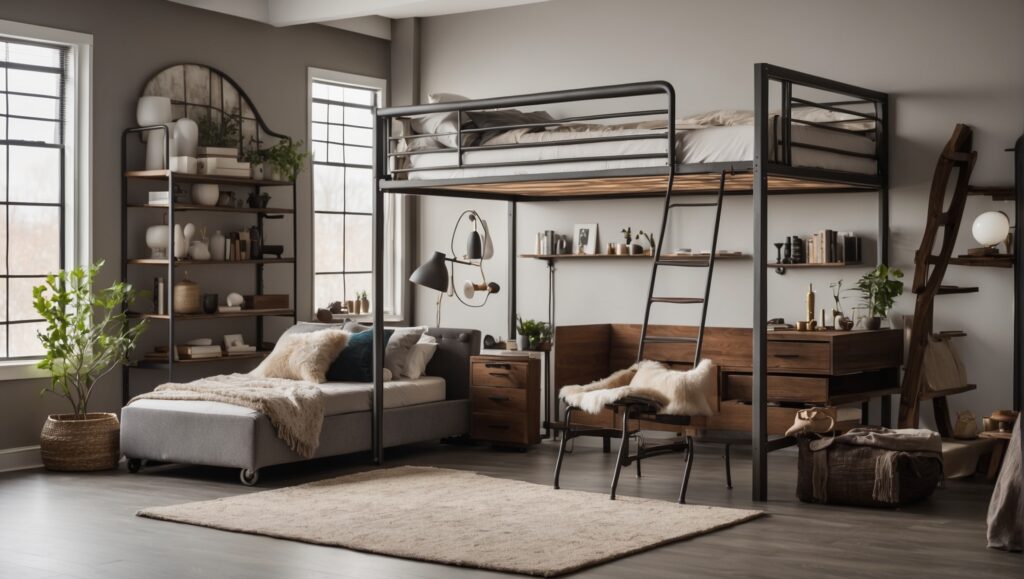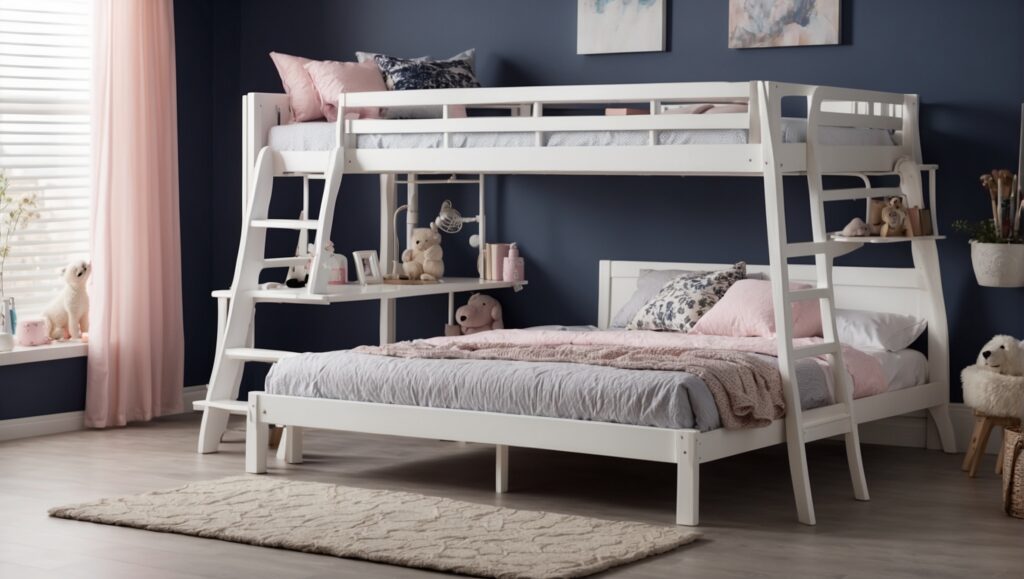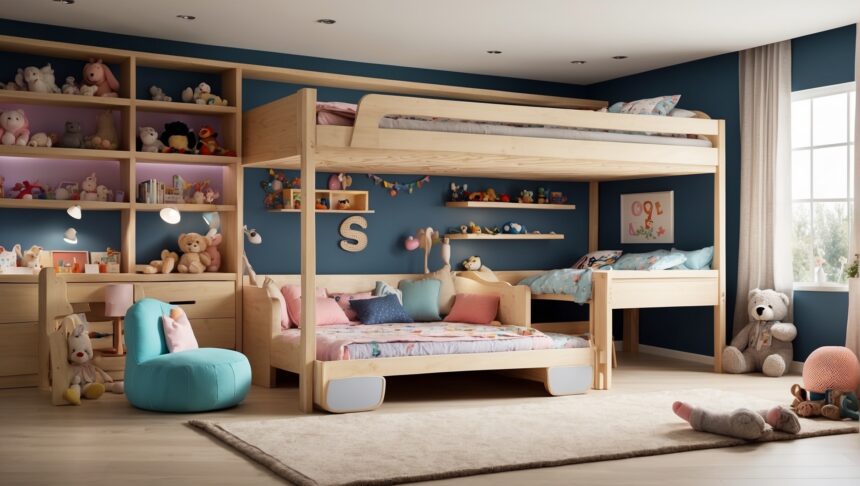Loft beds have become a popular space-saving solution, especially for those living in smaller homes or apartments. They offer a practical way to maximize floor space by elevating the bed and creating additional room underneath for various purposes. Whether you’re considering a loft bed for your child’s bedroom, a college dorm, or your own home, understanding the weight limit for loft beds is crucial to ensure safety and longevity. In this comprehensive guide, we will delve into the factors that determine loft bed weight limits, provide general guidelines, and address common questions related to this topic.
Understanding Loft Beds
What Are Loft Beds?
Loft beds, also known as bunk beds without the lower bunk, are designed to elevate the sleeping surface, leaving an open space below. This space can be used for a variety of purposes, such as creating a cozy study area, setting up a play zone for kids, or even adding storage solutions. Loft beds come in various styles and materials, making them a versatile choice for different room designs.
The Appeal of Loft Beds
Loft beds have gained popularity for several reasons:
- Space Maximization: Loft beds are ideal for small rooms where every inch counts. By lifting the bed, you create more usable floor space.
- Versatility: The space underneath can be customized to meet various needs, from storage to a workstation or a relaxation area.
- Aesthetics: Loft beds can add a modern and stylish touch to your room, enhancing its overall appeal.
Now, let’s explore the key factors that influence the weight limit of loft beds.
Determining Loft Bed Weight Limits
Materials and Construction

The weight limit of a loft bed largely depends on the quality of materials and the design of the bed frame. Typically, loft beds are made from:
- Wood: Wooden loft beds are common and can support a substantial amount of weight. Hardwoods like oak and maple are especially sturdy.
- Metal: Metal loft beds are known for their durability and stability. They are often preferred for heavy-duty use.
- Particleboard or MDF: Some loft beds are constructed with engineered wood products like particleboard or medium-density fiberboard. These are generally less robust and have lower weight limits.
Weight Distribution
Understanding how weight is distributed on the loft bed is crucial. Weight limits are usually specified for the mattress. Still, it’s essential to consider the weight of the person(s) using the bed and any additional items placed on or under it.
Assembly and Installation
The way a loft bed is assembled and installed can significantly impact its weight limit. Ensure that you follow the manufacturer’s instructions precisely, use appropriate hardware, and regularly inspect the bed for any signs of wear or damage.
Age and Intended Use
Consider the age and intended use of the loft bed. Children’s loft beds may have lower weight limits compared to those designed for adults. A loft bed used for a child’s bedroom might be rated for around 150-250 pounds, while adult loft beds can often support 250 pounds or more.
General Guidelines for Loft Bed Weight Limits
While weight limits can vary greatly depending on the factors mentioned above, here are some general guidelines to consider:

- Child-Specific Loft Beds: For loft beds designed for children, the weight limit is typically between 150 and 250 pounds. Check the manufacturer’s guidelines first.
- Adult Loft Beds: Loft beds intended for adults can often support more weight, typically around 250 to 500 pounds. However, this can vary, so it’s essential to refer to the specific bed’s documentation.
- Built-in vs. Freestanding: Built-in loft beds, like those in college dorms, are usually sturdier and built to support higher weight limits than freestanding loft beds.
- Regular Inspection: Regardless of the loft bed’s weight limit, it’s essential to inspect it regularly for any signs of wear and tear, as this can impact its overall strength and safety.
- Consult the Manufacturer: Always refer to the manufacturer’s guidelines for the specific loft bed you are considering. They will provide the most accurate information regarding weight limits and usage.
Addressing Common Questions
Can Loft Beds Support Two People?
In general, loft beds are designed for single sleepers. However, some loft beds are explicitly built to accommodate two people. These are typically larger and sturdier, often referred to as “full” or “queen” loft beds.
Are There Ways to Increase Loft Bed Weight Limits?
While it’s not recommended to exceed the manufacturer’s specified weight limit, there are some precautions you can take to ensure the loft bed’s longevity. These include using high-quality, supportive mattresses, distributing weight evenly, and avoiding sudden, heavy impacts on the bed.
What About Safety Rails?
Many loft beds come with safety rails to prevent falls. These rails are essential, especially for children and those sleeping in the top bunk. Make sure the loft bed you choose includes safety rails, and use them as directed.
Can You Reinforce a Loft Bed for Higher Weight Limits?
Reinforcing a loft bed should not be undertaken lightly. Adding extra support or modifying the structure can affect the bed’s integrity and safety. If you believe you need a loft bed with a higher weight limit, it’s better to explore options that are designed for heavy-duty use from the start.
What if I Exceed the Weight Limit?
Exceeding the weight limit of a loft bed can lead to structural damage and accidents. It’s crucial to respect the bed’s designated weight capacity to ensure your safety and the bed’s longevity.
Conclusion
Understanding the weight limit for loft beds is vital for ensuring the safety and durability of your furniture. The weight limit varies based on factors like materials, construction, and intended use. Always refer to the manufacturer’s guidelines and consider the age and purpose of the loft bed. By following these recommendations, you can make the most of your loft bed while keeping safety a top priority.
We hope this guide has answered your questions regarding loft bed weight limits and provided valuable insights into selecting the right loft bed for your needs. If you have any more questions or need further assistance, don’t hesitate to reach out to the manufacturer or a professional in the furniture industry.
By prioritizing safety and making informed choices, you can enjoy the benefits of a loft bed without any worries about its weight limit.
Thank you for reading, and we wish you all the best in your loft bed journey!







